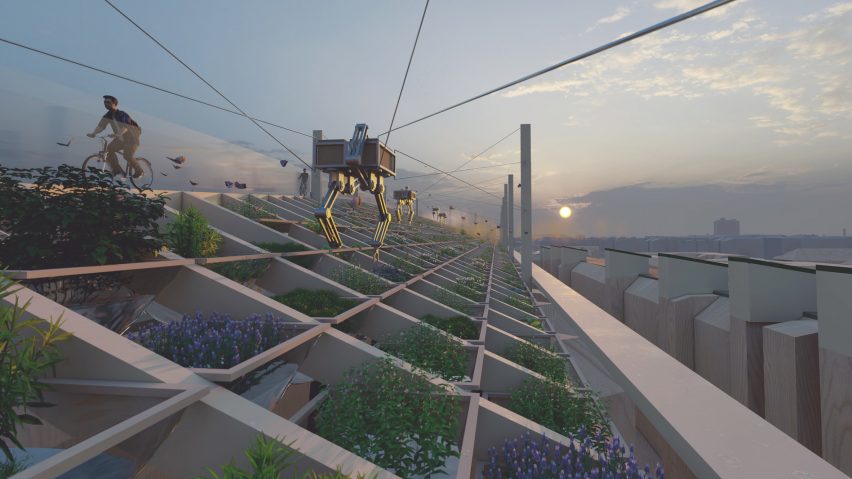
Ten projects from KADK graduates offer "solutions to the major challenges of our time"
Students from the Royal Danish Academy of Fine Arts, Schools of Architecture, Design and Conservation (KADK) are sharing projects that aim to create a healthier, more sustainable and democratic society as part of their VDF school show.
They were created as part of the school's graduate programmes in Architecture and Design, which are focused on addressing the UN's Sustainable Development Goals as a means of considering "how we should design and build in the future".
The 10 projects showcased below were selected from a pool of 280 students and include a modular timber school, bacteria-dyed textiles and a "hydroponic cultural landscape".
The Royal Danish Academy of Fine Arts, Schools of Architecture, Design and Conservation
University: The Royal Danish Academy of Fine Arts, Schools of Architecture, Design and Conservation
Course: MA Architecture and MA Design
KADK Graduation 2020 – Solutions to the major challenges of our time:
"Climate. Health. Democracy. Sustainability. 280 MA Architecture and MA Design graduates have addressed a number of the challenges we face as a global community today. How do we ensure a sustainable cooling of our cities and how can we use carbon-neutral building materials? Or how can design solutions help accelerate a better recovery for the benefit of each individual and society in general?
"The curriculum at the Royal Danish Academy of Fine Arts, Schools of Architecture Design and Conservation (KADK) is rooted in research, practice and artistic development. For the past four years, KADK has added a strategic focus on the 17 UN Sustainable Development Goals (SDG). We believe that the SDGs can inspire our students to consider how we should design and build in the future, using a holistic perspective to provide new, original and necessary global solutions to these pressing concerns.
"Their projects demonstrate how architecture, design and conservation can create visions, new knowledge and solutions to complex problems in compelling and attractive designs. Future generations of architects and designers – like those we educate at KADK – must be capable of releasing this vast potential."
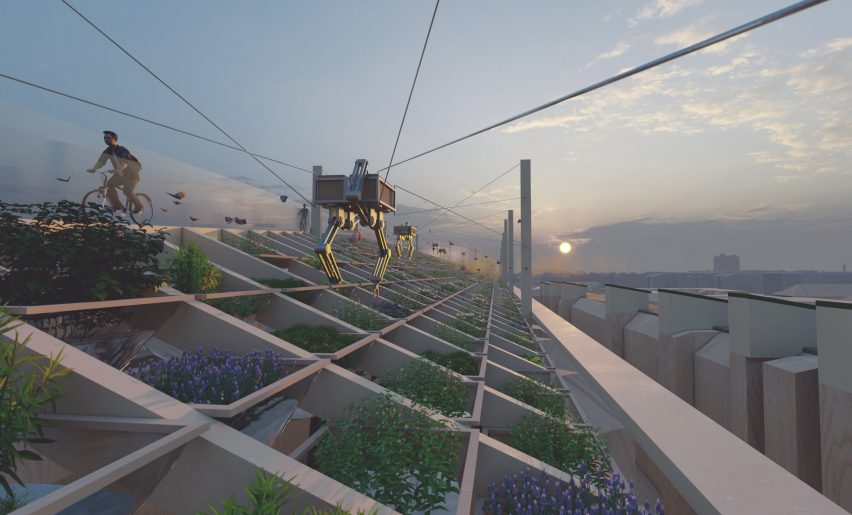
The Green Structure of Copenhagen by Agnes Josefin Hekla, MA Architecture
"What would Copenhagen look like if the city had to be self-sufficient in terms of its food supply? This project creates solutions for a scenario in which the city is forced to feed itself, due to changed global conditions caused by changing climate and food shortages.
"A hydroponic cultural landscape is established across the city's rooftops, between blocks of flats, across car parks and railway beds for raising vegetables in water without soil. Besides supplying the city with vegetables and collecting large volumes of precipitation, the urban landscape is ideal for movement, recreation and working together to grow vegetables."
Studio: CITAstudio – Computation in Architecture, Institute of Architecture and Technology
Tutor: Paul Nicholas
Press contact: [email protected] or [email protected]

Healing Product Design in a Neonatal Context by Alexandra Rendtorff and Amalie Gielov, MA Design
"This chair was developed for parents who are caring for a premature baby and for bringing the infant out of its incubator. The chair is designed so a parent can give the infant the protection it needs against lights and sounds. The infant is provided with security, heat and moisture by lying against the parent's skin, enabling it to relax more easily when it receives painful treatments.
"The design is inspired by nature and uses wood and fabric in red hues to remind the infant of its first sensory impressions in the womb. The product was developed in dialogue with staff at Rigshospitalet hospital in Copenhagen."
Studio: Strategic Design and Entrepreneurship
Tutor: Karina Mose
Press contact: [email protected] or [email protected]
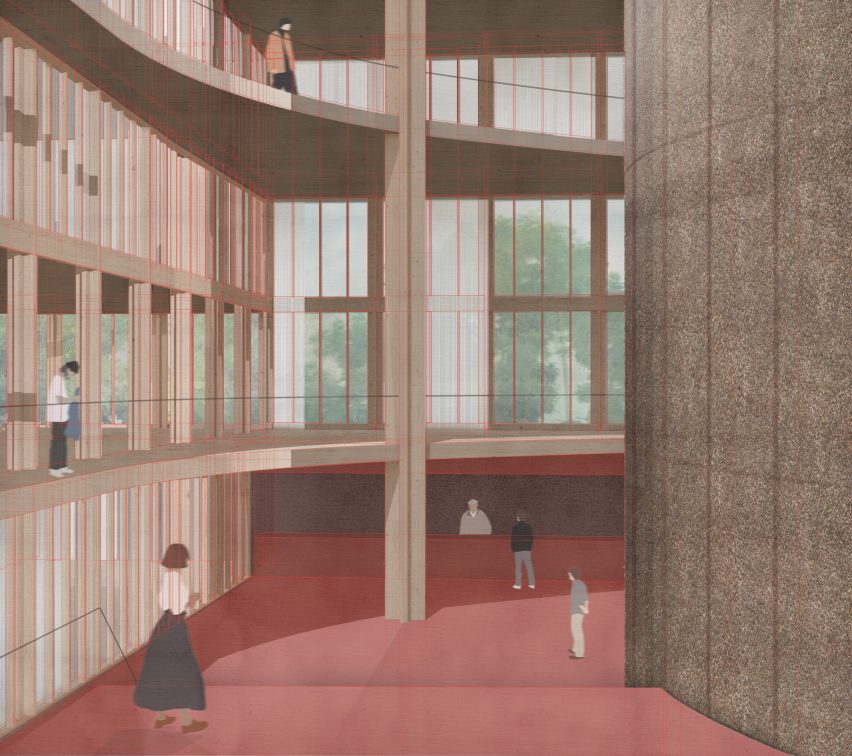
The Organic System by Anna Cecilie Nicolaysen and Julie Hvid Petersen, MA Architecture
"The Organic System is based on wooden structures and blocks of straw, which is a traditional building material. The straw components are replaceable and the structure is built according to the principle of Design for Disassembly. The components are built into the load-bearing structure and serve as cladding, building envelope and insulation.
"The project contains an ancillary cultural hall and 225 youth housing units. It challenges the regulations that currently prohibit large-scale wooden structures, whose sensory and aesthetic features and low carbon emissions are otherwise desirable urban qualities."
Studio: Settlement, Ecology & Tectonics
Tutors: Morten Vedelsbøl and Nee Rentz-Petersen
Press contact: [email protected] or [email protected]
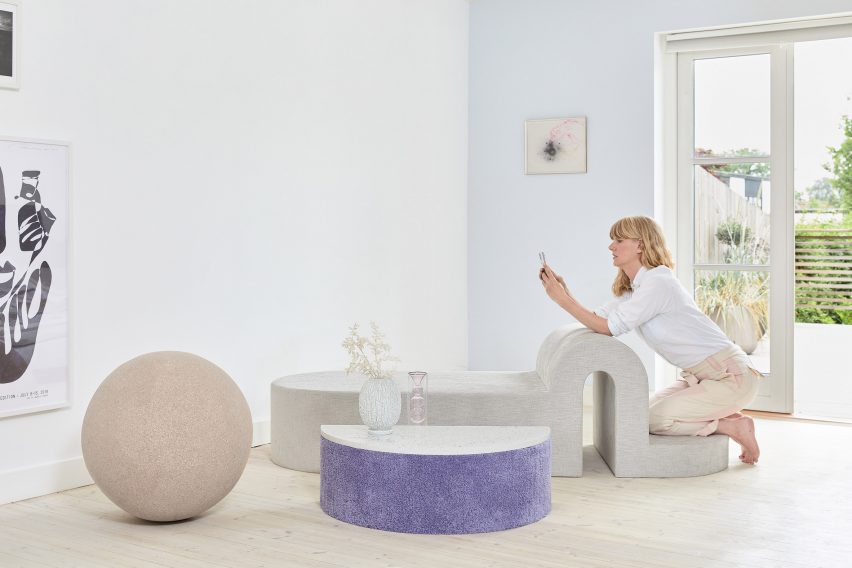
Must Move by Christel Witthøft Cortz, MA Design
"We spend most of our time both at work and at home sitting down – usually in the same position. This can be a source of great discomfort for the neck, shoulders and back.
"This project takes the ways in which children navigate the rooms and furniture of a home as its starting point, to examine how the furniture we normally use for relaxation can inspire adults to be more active. The sofa is transformed into a chaise longue and an armchair is turned into a sphere, inviting the user to assume a variety of seated positions."
Studio: Furniture & Object
Tutor: Grethe Weber
Press contact: [email protected] or [email protected]
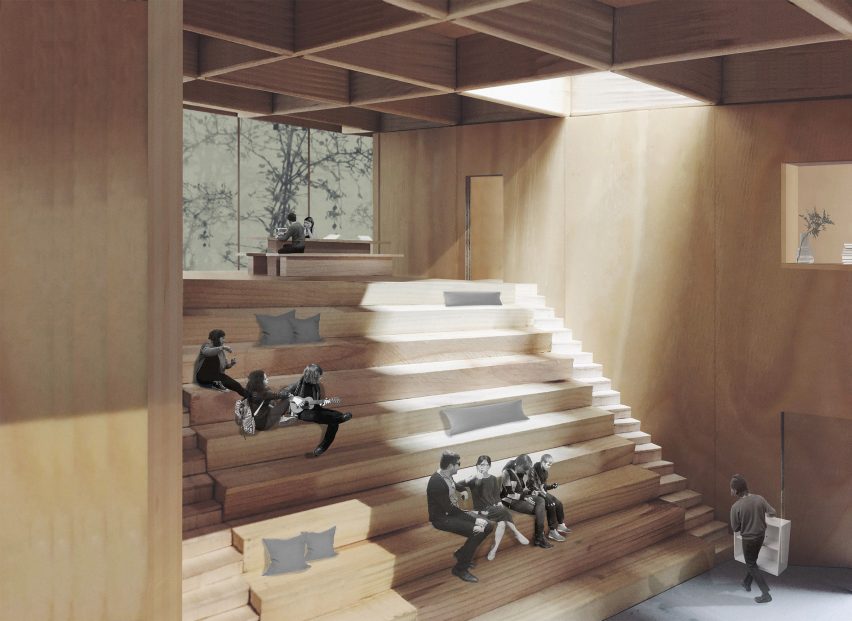
Timber Architecture & Circular Design by Maja Olsson, MA Architecture
"As teaching methods and educational technologies change over time, there is a need to continuously adapt a school's physical spaces. That is the starting point for this design for a school for students with impaired hearing, which is based on the Design for Disassembly principle.
"The project utilises highly visible, easily replaceable elements in the building to make it adaptable to changing times and users. The predominant material is cross-laminated timber. The project is based on a collaborative effort with the municipality of Hässleholm, which endeavours to reduce its carbon footprint whenever it develops its urban areas."
Studio: Strategic Design and Entrepreneurship
Tutor: Nicholas Thomas Lee
Press contact: [email protected] or [email protected]
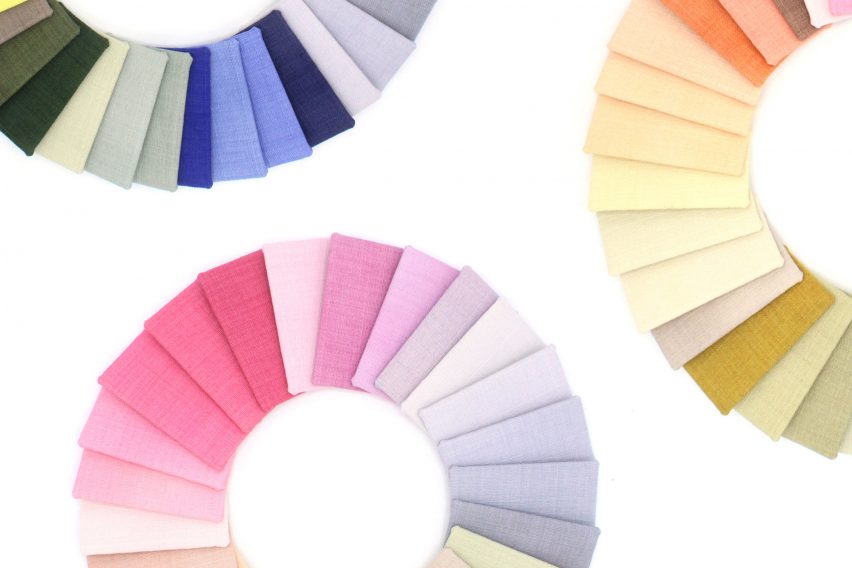
Bacterial Dye – the Pigment of the Future by Monica Louise Hartvigsen, MA Design
"This project showcases how bacteria can be used to dye textiles using a method that results in rich, bright colours that fully correspond to the synthetic colours we are familiar with today. The only difference is that this method is better for the environment as it needs little water and does not rely on toxic chemicals.
"The project demonstrates that it is possible to create beautiful dyes and woven textures for the furniture and textile industries using bacteria. The technique was developed at the laboratories of the Technical University of Denmark (DTU) and I have subsequently collaborated with the Danish company Gabriel Textile. The method can be upscaled for industrial production."
Studio: Furniture & Object
Tutor: Grethe Weber
Press contact: [email protected] or [email protected]
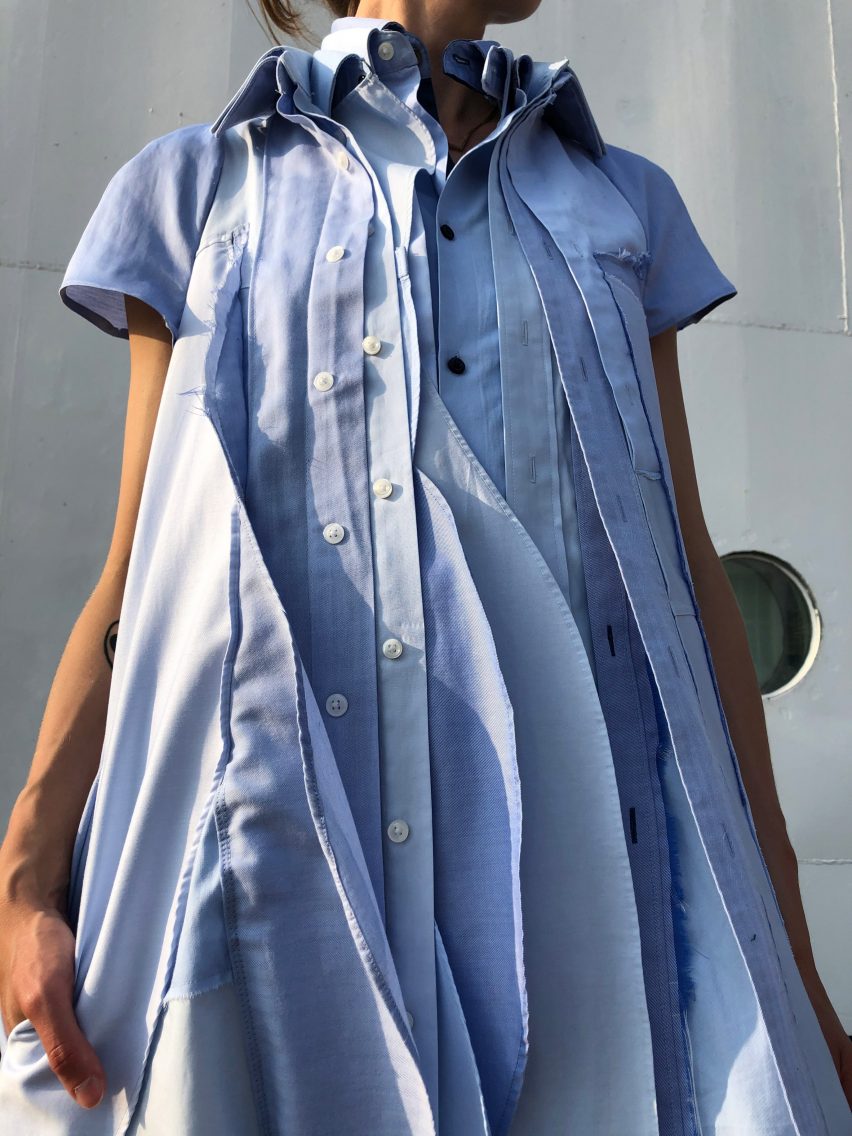
Re-entwined by Ida Andrea Plouborg Lorentzen, MA Design
"How can the fashion industry become sustainable? The Re-entwined project turns the fashion industry's logic on its head and makes use of recycled materials, discarded clothes from second-hand shops and textiles from family and friends.
"They are collaged together to form new articles of clothing, with individual components used as aesthetic focal points to give each garment a unique history. This includes multiple lines of buttons that allow the garment to be made bigger or smaller over time, or providing an optional piece of fabric that can be added on to change the garment's expression and extend its designed life."
Studio: Fashion Design
Tutor: Bettina Bakdal
Press contact: [email protected] or [email protected]
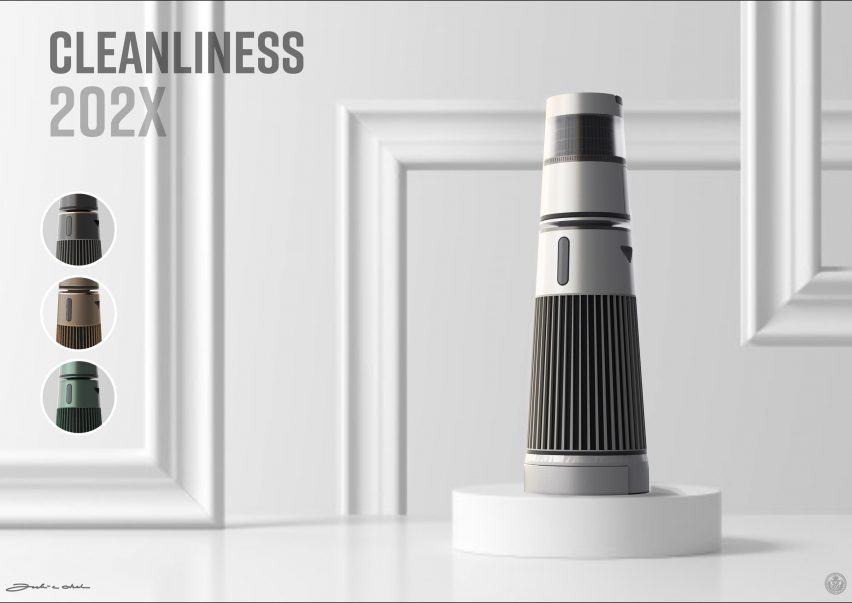
Cleanliness 202X by Julie Obel Elkjær, MA Design
"The Covid-19 pandemic has made Cleanliness202X more topical than ever. The product is designed to be a multifunctional tower capable of cleaning the home or workplace using several different methods, all the way down to a molecular level.
"The top section comprises a UV-C light and a dehumidifier, which kill bacteria and lower the ambient humidity. The middle section can purify the air of contaminants using HEPA filters and the bottom section serves as both a robotic vacuum cleaner and a docking station.
"The product is the first of its kind to combine these functions and radically tackle challenges such as pandemics, higher relative humidity due to climate change and particulate contamination in our cities."
Studio: Industrial Design
Tutor: Karina Mose
Press contact: [email protected] or [email protected]
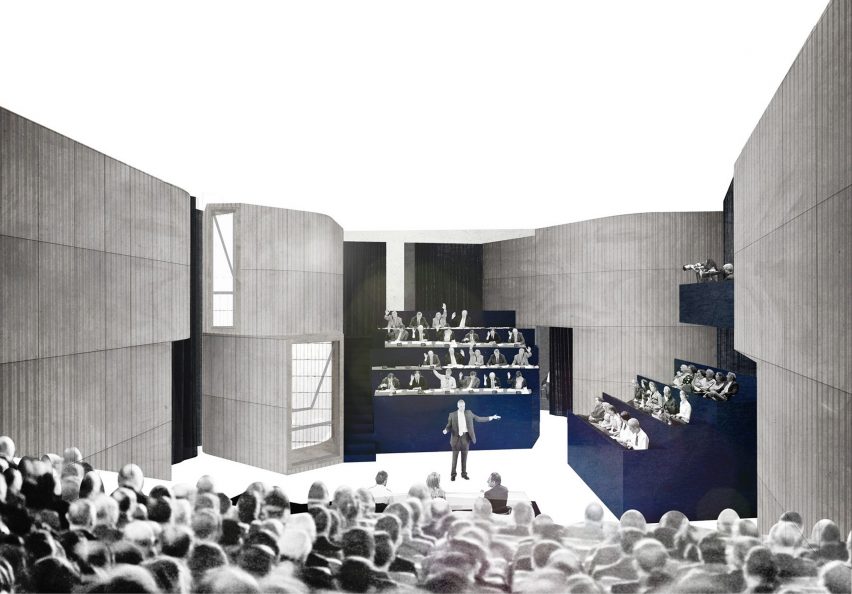
Democratising Influence by Emil Fromberg and Frederik Østerberg, MA Architecture
"The European Quarter in Brussels houses the most powerful institutions of the European Union alongside a large number of lobbying organisations that aim to exert influence on EU policymaking and is often referred to as the Brussels Bubble. The Democratising Influence project rethinks the architecture of the quarter and offers a new vision for how it can host a more transparent, participatory European democracy.
"This includes a consultation theatre for lobbyism, an exhibition of opinions, local and public spaces for assemblies, a public consultation quarter and a visible sign of lobbyists' presence on the facades of the buildings."
Studio: Political Architecture – Critical Sustainability
Tutor: Runa Johannessen
Website: democratizinginfluence.eu
Press contact: [email protected] or [email protected]
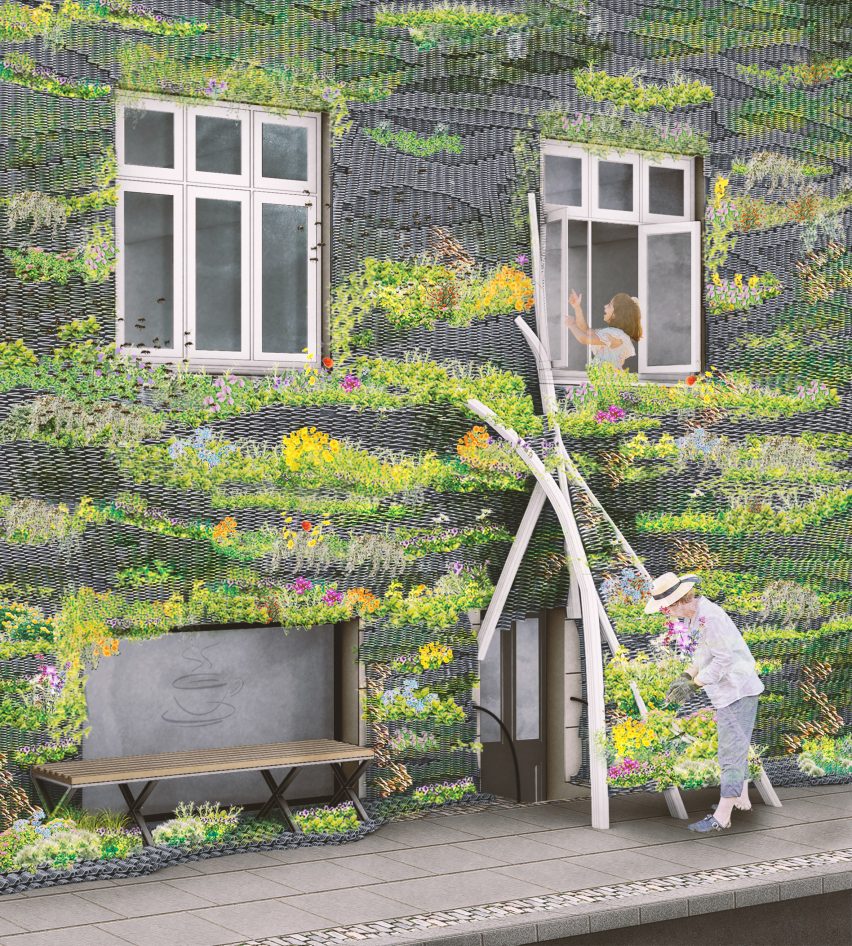
Bio-scaffolds for Urban Greening by Ruxandra Stefania Chiujdea, MA Architecture
"The climate crisis is making cities hotter and rising temperatures are notably measurable in narrow streets. This creates a need to cool buildings sustainably. Bio-scaffolds for Urban Greening hopes to offer a solution by drawing nature into the city.
"The project makes use of digital technologies and 3D printing to create site-specific bio-scaffolding made of recycled and natural materials. This provides an elegant growth medium for plants on the facade of apartment buildings and keeps heat away from the facades. Residents can help plant the vertical garden and tend it during the summer season until the garden wilts and releases its grip on the wall when winter comes."
Studio: CITAstudio – Computation in Architecture
Tutor: Paul Nicholas
Press contact: [email protected] or [email protected]
Virtual Design Festival's student and schools initiative offers a simple and affordable platform for student and graduate groups to present their work during the coronavirus pandemic. Click here for more details.